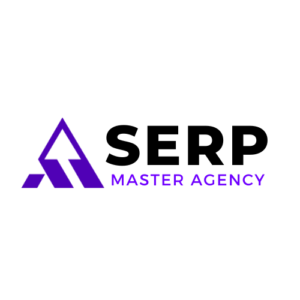As we navigate the intricate web of digital landscapes, ensuring our online presence is not merely visible but also easily navigable becomes paramount. Imagine constructing a meticulously designed building with hidden passages and locked doors; similarly, a website’s intricate design must not impede search engines from exploring its depths.
The key lies in a well-crafted Technical SEO Checklist that unlocks the potential for a healthy and crawlable website.
Join us as we unravel the essential components that lay the foundation for a successful digital footprint.
Key Takeaways
- Prioritize main pages at the top level for better navigation and search engine visibility.
- Implement responsive design for a mobile-friendly layout, focusing on touch-friendly interface and intuitive navigation.
- Utilize page speed optimization techniques such as image compression and minification of CSS/JS files to enhance loading times and user experience.
- Incorporate advanced SEO techniques like XML sitemap implementation, canonical tags optimization, and structured data for better website visibility and search engine performance.
Website Structure
Ensuring a logical and intuitive website structure is essential for optimizing user experience and search engine visibility. When it comes to URL hierarchy organization, it’s crucial to arrange your web pages in a manner that reflects the content’s importance and relevance. Start by prioritizing your main pages at the top level and then categorize subpages accordingly. This not only helps users navigate your site more efficiently but also aids search engines in understanding the hierarchy and relationships between different pages. A well-structured site is especially important for local SEO, as it enables search engines to better index location-specific pages and improves your chances of appearing in local search results.
Another vital aspect of website structure is the internal linking strategy. By strategically interlinking pages within your site, you can establish a logical flow of information and guide both users and search engine crawlers to essential content. Internal links help spread link equity throughout your website, improving the visibility of all pages and boosting your site’s overall SEO performance. Remember to use descriptive anchor text that provides context about the linked page, enhancing the user experience and reinforcing the relevance of your content.
Mobile-Friendly Design
Our approach to optimizing mobile-friendly design involves meticulous analysis of user behavior trends and strategic implementation of responsive elements to enhance the overall browsing experience. A responsive layout is essential in ensuring that our website adapts seamlessly to various screen sizes, providing users with a consistent and visually appealing experience across devices.
By prioritizing a touch-friendly interface, we cater to the growing number of users accessing the web through mobile devices. Elements such as larger buttons, optimized spacing, and intuitive navigation contribute to a smoother browsing experience, reducing the risk of user frustration and increasing engagement.
Through careful consideration of mobile design best practices, we aim to create a user-centric experience that prioritizes accessibility and functionality. By staying informed about emerging trends and user preferences, we can continuously refine our mobile design strategy to meet the evolving needs of our audience. Ultimately, our commitment to mobile-friendly design not only improves user satisfaction but also positively impacts our website’s SEO performance.
Page Speed Optimization
When focusing on Page Speed Optimization, we prioritize image compression techniques and the minification of CSS and JavaScript files.
By reducing the size of images and streamlining code, we enhance loading times, improving user experience and potentially boosting search engine rankings.
These practices are crucial for optimizing website performance and ensuring a smooth browsing experience for visitors.
Image Compression Techniques
Implementing efficient image compression techniques significantly enhances a website’s page speed performance, optimizing user experience and search engine rankings.
When considering image optimization strategies, choosing the right file formats is crucial. JPEG is commonly used for photographs due to its compression capabilities that maintain quality. For graphics or images with text, PNG is preferred for its lossless compression. However, for more complex graphics with fewer colors, SVG can be beneficial as it scales without losing quality.
Understanding the SEO implications of visual content is essential. Large image files can slow down page loading times, affecting user experience and search engine rankings. By utilizing proper image compression techniques and selecting appropriate file formats, websites can improve their performance and overall SEO health.
Minify CSS and JS
Considering the significant impact that image compression techniques have on page speed performance, the next crucial step for optimizing website speed is to minify CSS and JS files. Minifying CSS and JS involves removing unnecessary spaces, comments, and characters from the code, resulting in faster load times and better performance.
Here are three key benefits of minifying CSS and JS for your website:
- Enhanced Loading Speed: Minified files are smaller in size, leading to quicker loading times.
- Improved User Experience: Faster loading pages provide a better user experience, reducing bounce rates.
- Optimized Code: Minifying CSS and JS optimizes the code structure, making it more efficient and easier for search engines to crawl.
XML Sitemap Implementation
To ensure optimal search engine crawlability and indexing, incorporating an XML sitemap into our website structure is imperative. The XML sitemap acts as a roadmap for search engine bots, guiding them to important pages on our site.
When designing the XML structure, we must consider our indexing strategy and crawling behavior. Including all relevant URLs in the sitemap helps search engines understand the hierarchy and priority of our content.
Once the XML sitemap is ready, we need to focus on the submission process. Submitting the sitemap to search engines like Google and Bing ensures that our website gets indexed efficiently.
Regularly updating and maintaining the XML sitemap is crucial as it reflects any changes in our website structure. By paying attention to these details, we can enhance our website’s visibility and ensure that search engines effectively crawl and index our content.
Robots.txt and Meta Robots
As we fine-tune our XML sitemap to optimize search engine crawlability, our attention now shifts towards understanding the role of Robots.txt and Meta Robots directives in shaping how search engines interact with our site.
- Indexing Strategy: Crafting a Robots.txt file allows us to guide search engine crawlers on which pages to index, aligning with our indexing strategy for maximum visibility.
- Noindex Directive: Implementing Meta Robots with a ‘noindex’ directive strategically prevents certain pages from appearing in search results, safeguarding our crawl budget and focusing link equity on essential pages.
- Crawl Budget: By utilizing Robots.txt effectively to block irrelevant or duplicate content, we can ensure that search engine bots allocate their crawl budget efficiently to our most valuable pages, enhancing overall site performance and visibility.
Understanding the nuances of Robots.txt and Meta Robots directives empowers us to fine-tune our website’s interaction with search engines, strategically managing our indexing strategy, crawl budget, and link equity distribution for optimal SEO outcomes.
Canonicalization Strategy
In our website’s SEO optimization journey, the canonicalization strategy serves as a crucial mechanism for consolidating the authority of our content across multiple URLs. Implementing a robust canonicalization strategy brings forth various URL canonicalization benefits. By defining the preferred version of a webpage, we ensure that search engines direct their link metrics to the right URL, preventing issues related to duplicate content and scattered ranking signals.
When it comes to managing duplicate content across different domains, utilizing cross-domain canonical tags becomes essential. These tags indicate the primary source of the content, helping search engines understand which version to prioritize in their indexing process.
By strategically implementing cross-domain canonical tags, we can streamline our website’s structure and prevent dilution of ranking signals, ultimately enhancing the coherence and visibility of our online presence.
A well-thought-out canonicalization strategy not only enhances SEO performance but also contributes to a more user-friendly and organized website experience.
Schema Markup Integration
Upon solidifying our canonicalization strategy to optimize our website’s content authority and structure, the next strategic step involves seamlessly integrating schema markup to further enhance our website’s visibility and relevance in search engine results. Schema markup provides search engines with additional context about the content on our website, making it easier for them to understand and display relevant information to users.
- Rich Snippets Utilization: By implementing schema markup to generate rich snippets, we can enhance the appearance of our website’s search results, increasing the likelihood of attracting clicks and improving our overall click-through rate.
- Voice Search Optimization: Schema markup plays a crucial role in voice search optimization by enabling search engines to better interpret and provide relevant information in response to voice-based queries, ensuring our content is well-positioned for voice search results.
- Structured Data Implementation: Structuring our website’s data using schema markup helps search engines organize and display our content more effectively, ultimately improving our website’s visibility and ranking potential.
Frequently Asked Questions
How Does the Technical SEO Checklist Differ for E-Commerce Websites Compared to Informational Websites?
When considering e-commerce versus informational websites, we focus on adapting mobile optimization for user experience and tailoring internal linking to enhance site architecture. These elements play vital roles in boosting visibility and engagement.
What Are Some Common Pitfalls to Avoid When Implementing Schema Markup on a Website?
When implementing schema markup, we’ve noted that common pitfalls include improper nesting of elements, missing required properties, and excessive markup. To avoid these issues, stick to best practices, validate markup, and troubleshoot using tools like Google’s Structured Data Testing Tool.
How Can Website Owners Ensure That Their XML Sitemap Is Regularly Updated and Submitted to Search Engines?
To ensure our website indexing is effective, we regularly update and submit our XML sitemap to search engines. By monitoring crawl frequency and update frequency, we maintain a healthy site that is easily discoverable and searchable.
Are There Any Specific Considerations for Implementing a Canonicalization Strategy on a Website With Multiple Subdomains?
Back in the day, handling subdomain management was crucial for SEO. Cross-domain canonicalization is key, ensuring the right content gets indexed. We focus on best practices for our websites, optimizing for search engines.
How Can Website Owners Monitor and Analyze the Crawlability of Their Website Over Time to Identify and Address Any Issues That May Arise?
We monitor crawlability metrics and track performance regularly to ensure website indexing is optimal. By analyzing data trends, we identify and address any issues promptly, focusing on content optimization to maintain a healthy website.
Conclusion
In conclusion, following this technical SEO checklist is key to ensuring a healthy and crawlable website. By focusing on:
- Website structure
- Mobile-friendly design
- Page speed optimization
- XML sitemap implementation
- Robots.txt
- Meta robots
- Canonicalization strategy
- Schema markup integration
We can improve our site’s visibility and performance.
Remember, in the ever-evolving world of SEO, staying ahead of the curve is crucial. So let’s roll up our sleeves, put on our thinking caps, and get to work optimizing our website for success.

Suraj Rana is a highly regarded SEO expert specializing in the dental industry. His expertise lies in crafting strategic SEO marketing plans to help new or expanding businesses increase their online visibility and attract more customers. Suraj Rana’s skills extend to improving website rankings and boosting organic search visibility, thereby enhancing web traffic and return on investment for businesses.


